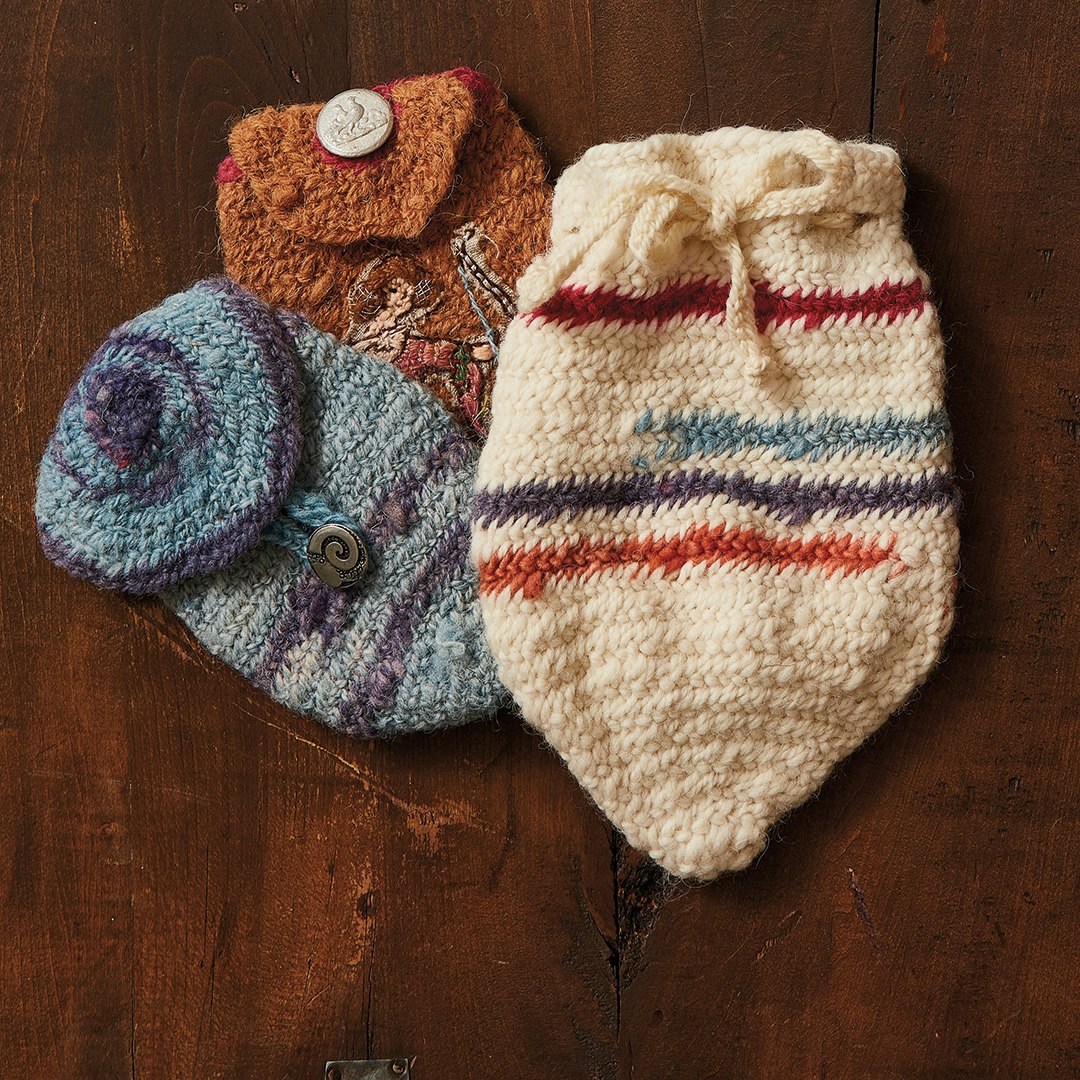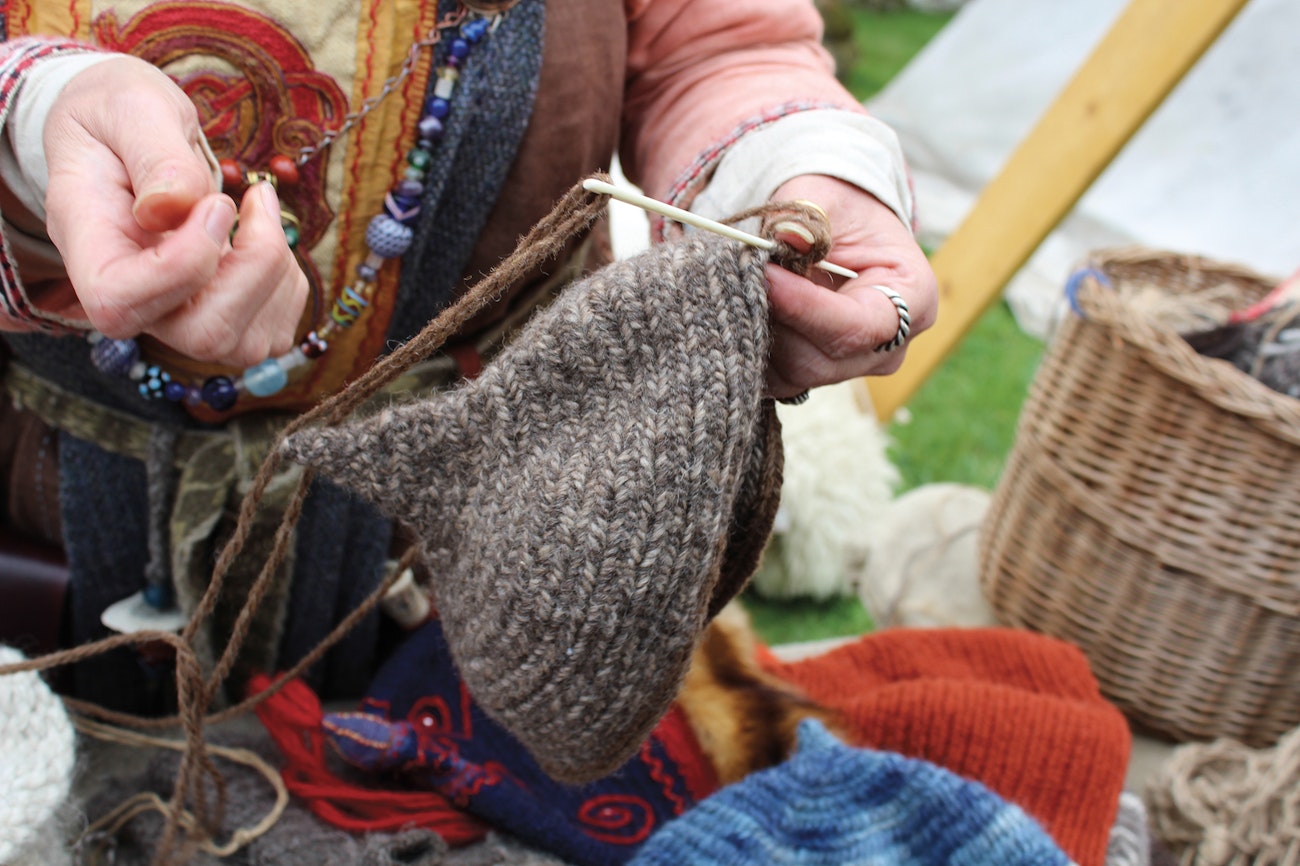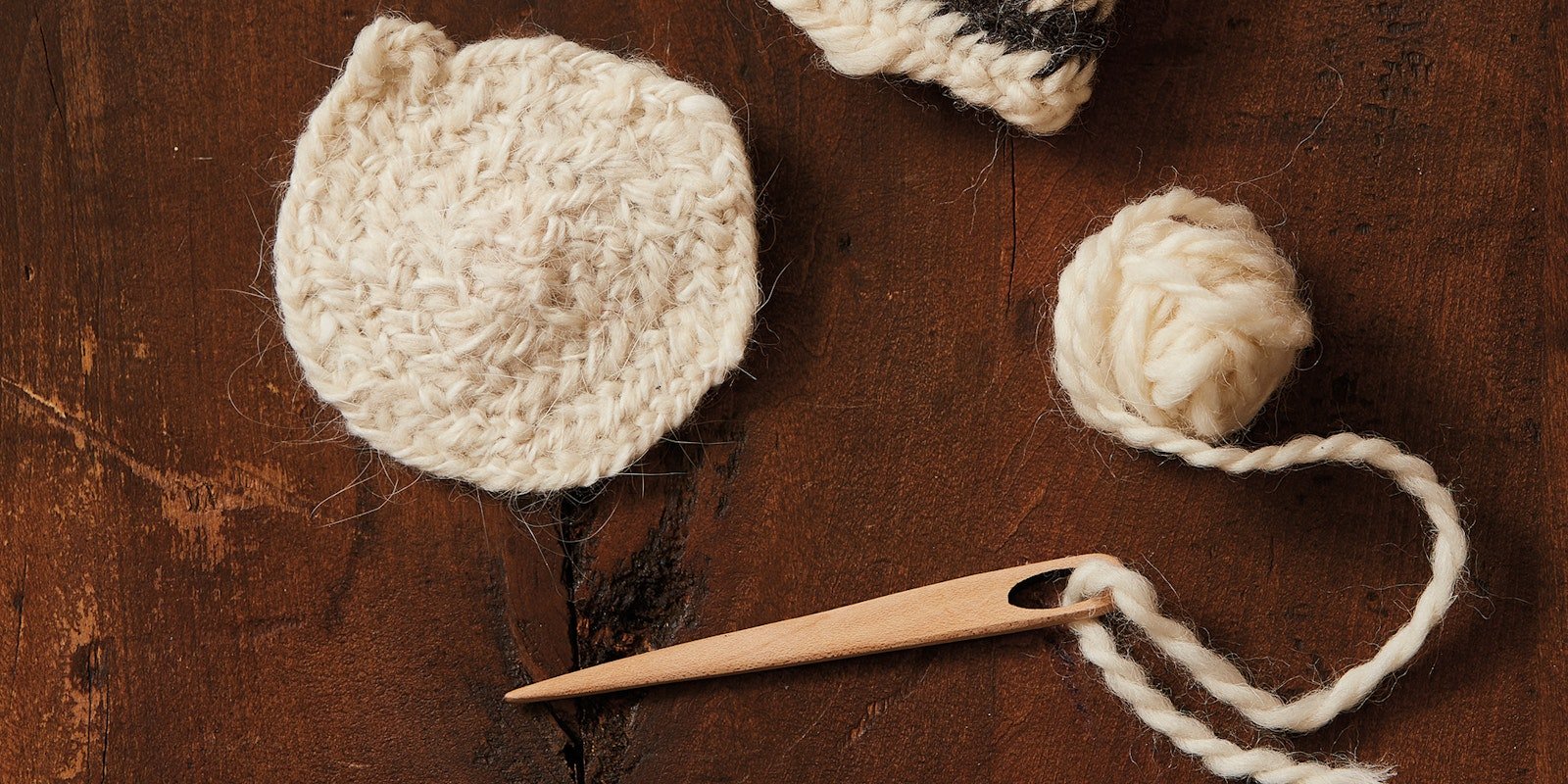Nålbinding is seemingly universal, crossing cultures and continents. Extant textiles created with this single-needle looping technique have been found by archaeologists the world over. Needles made of bone and horn that could have been used for nålbinding have also been located in archaeological sites, but none with a piece of nålbinding still attached.
Evidence of nålbinding is found in many parts of the world, but the textile fragment that led to my interest in this technique lies close to my home in the north of England and is one of only two extant pieces of nålbinding found in the United Kingdom. The Viking-age sock found in Coppergate, York, dates from around the mid-tenth century. Made from natural white and madder-dyed red wool, it was created using a stitch only found in that one artifact, which is now called York stitch. Today at the Danelaw Centre for Living History near York, we wear items made using this stitch and teach nålbinding classes to bring this craft full circle.
 Pouches are a great beginner project.
Pouches are a great beginner project.
So to Speak
Nålbinding, typically pronounced noll-bin-ding, means “needle binding” or “needle linking” in Norwegian. Sometimes spelled nalbinding, it is also the name commonly used for this technique in English.
“Nålbinding is the Norwegian word for a technique that is seen widely across the continents, centuries, and stages of technological development. The knudeløst net of Denmark is the same as schlingentechnik in Germany. Names and variations are found worldwide. In addition to variations caused by language there are descriptive names used to classify the technique. Anthropologists and textile researchers use names such as knotless netting, needle looping, coiling, and looped needle netting.”
—Dr. Kate Martinson, “Scandinavian Nålbinding: Needle-Looped Fabric,” Weaver’s Journal 12, 2, Issue 45 (Fall 1987).
Looping Around the Globe
One of the earliest known nålbound items, a textile fragment dating from 10,000 years ago, was found in a cave in Nahal Hemar, Israel. Researchers found that the fragment was made from plant fibers and human hair. Another early example of nålbinding is a fragment found at Friesack, Germany, dating to around 7,750 BCE. Close inspection shows that the two-ply yarn used was bast fiber spun S (left) and plied Z (right). Several other Stone Age looped finds are from Denmark.
From the Bronze and Iron Age, there are extant items of nålbound clothing such as the famous beret-shaped hat from the Tarim Basin in China found with the Cherchen Man mummy. The Roman era yields a famous pair of socks found in Oxyrhynchus, Egypt. The red Coptic-stitch socks were misidentified by early textile researchers as having been knitted, as the Coptic stitch bears a strong resemblence to stocking (or stockinette) stitch. The socks dated from the third to the fifth centuries CE and were found on the site of a Greek colony. Other Roman-era finds hail from elsewhere in Egypt and Syria.
From medieval times, some of the best-documented items are Scandinavian. Mittens were found in Mammen, Denmark (from which we now have the Mammen stitch), and others in Iceland, Finland, Sweden, Norway, and Poland. Medieval nålbinding is often found in ecclesiastical grave goods. Two German examples are the cap of Saint Simeon (wool, eleventh century) and the cashmere cap of Saint Bernard (twelfth century).
Archaeologists have located nålbound texiles throughout the Middle East, Europe, North and South America, and beyond. In the Pacific Islands, the indigenous people of Papua New Guinea make bilums, bags from bast fiber that are used to carry anything from firewood to babies. Nålbinding is found on almost every continent and was used by numerous cultures to solve many of life’s daily challenges.
Ancient Craft and Modern Times
In seventeenth-century Scandinavia, items were still nålbound, such as the famous Åsle mitten, which has a stitch named after it that is still in use today. Nålbinding continued in remoter areas of northern Europe well into the twentieth century. However, the technique faded as the faster art of knitting gained in popularity. There is some evidence that nålbinding was also carried to the United States, particularly in Scandinavian communities. An item made in the twentieth century was the toothbrush rug, a rag rug made from odds and ends of fabric combined using a nålbinding technique.
 Unna from Draicraeft nålbinding a hat during the reenactment of the Vikings at Whitby Abbey in 2018. Photo by Nathaniel Hunt
Unna from Draicraeft nålbinding a hat during the reenactment of the Vikings at Whitby Abbey in 2018. Photo by Nathaniel Hunt
Nålbinding Today
Today, nålbinding is a craft in resurgence in Europe. At events such as the annual Jorvik Viking Festival, traders from across Europe make, sell, and buy nålbound items. In addition to the interesting history of this ancient technique, nålbinding and looping techniques have some advantages over knitting: the fabric doesn’t ladder (as for a dropped stitch) and can be harder-wearing, thicker, and warmer than knitted fabric. Many of the stitches nålbinders use today are named after extant finds, such as the York, Oslo, Åsle, Mammen, and Korgen stitches. This thread links our hands to many cultures and deep into our shared past.
Resources
- Martinson, Kate. “Scandinavian Nålbinding: Needle-Looped Fabric.” Weaver’s Journal 12, 2, Issue 46 (Fall 1987).
- Claßen-Büttner, Ulrike. Nalbinding: What in the World Is That?: History and Technique of an Almost Forgotten Handcraft. Wiehl, Germany: Books on Demand, 2015.
Penelope Hemingway is a genealogist and historian who writes about material culture and textile history. She is a relative of the inventor of magenta dye and descends from a long line of Yorkshire wool weavers. She currently demonstrates spinning on a great wheel, bandweaving, and nålbinding at shows and for guilds across the north of England. She is the author of River Ganseys and Their Darkest Materials.
Originally published November 11, 2019; updated October 17, 2022.

